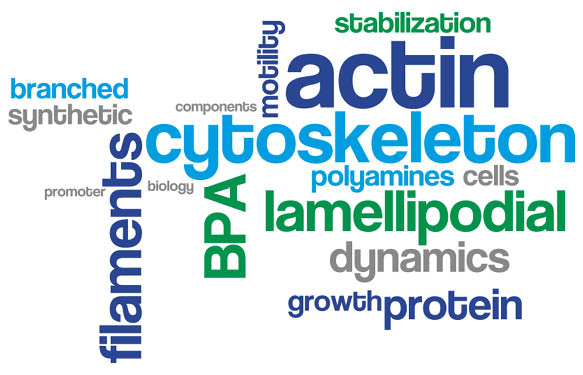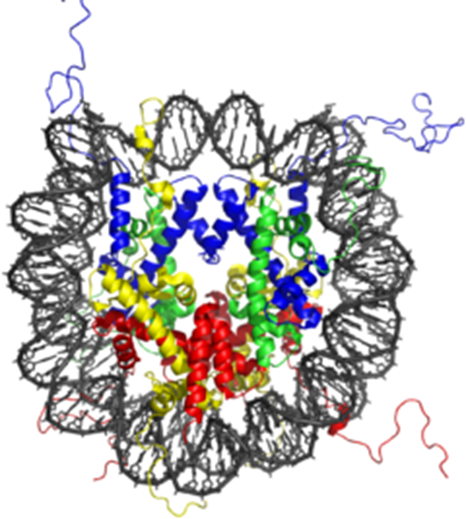Actin polymerisation and depolymerisation are crucial processes in cell biology. These assembly and disassembly dynamics generate protrusive forces involved in numerous cellular events (membrane scission, endocytosis or Golgi remodeling, lamellipodia and filopodia…). Other biological processes (adhesion, cytokinesis and cortex dynamics…) also involve such dynamics together with actin-myosin contractility in a higher level of complexity and interactions.
Cytoskeletal research and in particular the analysis of its dynamics is quite challenging. The need for deciphering more in details these physiological processes and to evaluate the contribution of each of the “players” have generate huge expectations in terms of research tools.
In this post, I invite you to discover the Next Generation of research tools in Actin Dynamics studies with the new Lamellipodial Growth Promoter (BPA).
Branched synthetic polyamine compounds – Lamellipodial Growth Promoter
Daniel Riveline and his team from the ISIS/IGBMC at the University of Strasbourg/France have recently found that Branched Synthetic Polyamines (BPAs) are able to generate growth and stabilization of lamellipodia within minutes. They could follow and document local growth of lamellipodia observed with actin-GFP transfected NIH3T3 cells (a video showing a 10 min period after addition of a specific BPA can be downloaded from the supplementary file of their recent publication [2]).
BPAs reach this effect by slowing down the filament elongation at barbed ends of actin filaments specifically, but do not affect pointed end growth. Furthermore, these compounds slow down filament disassembly and facilitate the nucleation of F-actin in the presence of capping proteins (1).
More recently, Riveline’s team were able to prove that BPAs also have a decelerating effect on cytokinetic ring closure in fission yeast (2), which not only shows that the compounds work in mammalian cells as well as in yeasts, but also highlights the fact that actin depolymerisation is involved in ring closure. Another video in the supplementary file shows the change of the cytokinetic ring diameter as a function of time during ring closure observed in a fission yeast strain expression myosin II regulatory light chain RIc1-tdTomato. Upon BPA addition the closure of the ring was slowed down up to 50% in a dose-dependent manner.
Undeniable evidence for studying actin dynamics
As actin dynamics play a crucial role in cell motility and cell division, compounds which act on these processes might become interesting candidates for anti-cancer drug development. BPAs lead to decreased cell motility as shown in cell migration assays using Boyden chambers (1) and to delayed division, meaning a decreased proliferation rate.
Further experiments will have to show whether BPAs might discriminate between actin in cancer and in healthy cells, which could lead to specific inhibitory effects on tumors.
BPA now available at tebu-bio

In cooperation with Daniel Riveline’s lab, tebu-bio has now made available one of the BPAs tested in the cited studies (C8N6 BPA; Fig. 1).
If you are interested in testing the compound’s effects in your experimental setup you can choose between 2 sizes.
Let us know your comments and questions through the form below!
References:
(1) Neveda et al., Synthetic polyamines promote rapid lamellipodial growth by regulating actin dynamics, Nature Communications 4, Article number: 2165; doi:10.1038/ncomms3165 (2013)
(2) Riveline et al., Synthetic polyamines: new compounds specific to actin dynamics for mammalian cell and fission yeast, Bioarchitecture 4: 4-5, 1-5 (2014)



